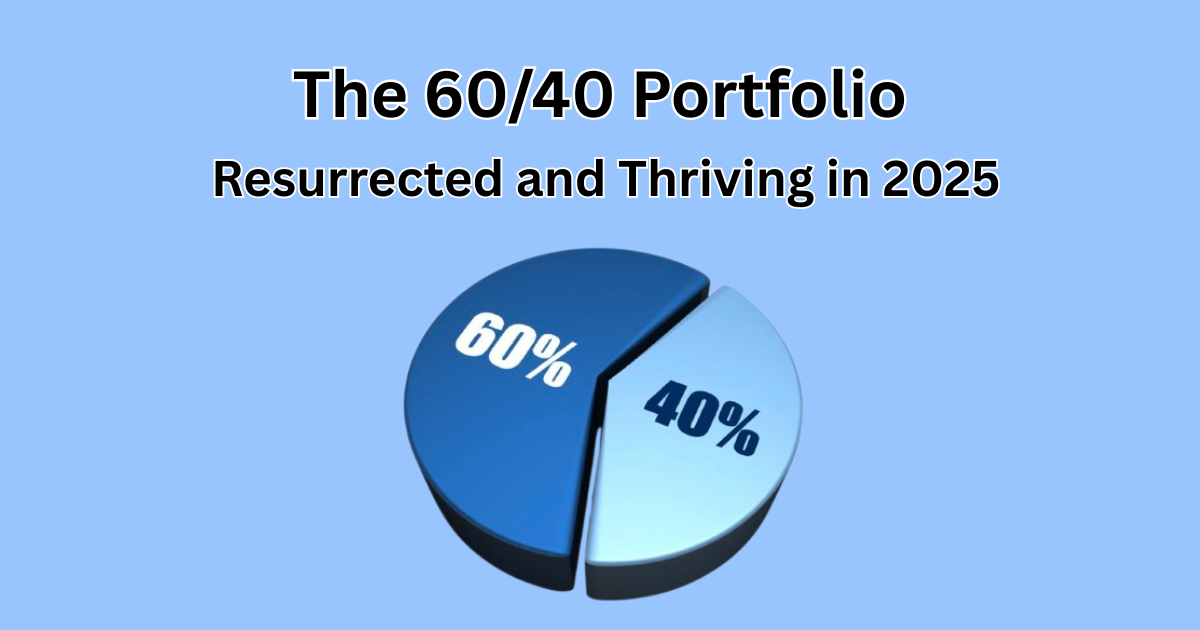
📚 Join the Duolingo for Investing
📈 Want to learn investing? Check out Blossom, where you can find 50+ hours of Duolingo-style lessons, taught by North America’s largest investing content creators.
⭐️ With a 4.7 rating and ranked an Essential Finance App of 2024 by Apple, Blossom is loved by over 250,000 members.

Welcome to The Profit Zone 👋
Where thousands of millionaires, CEO’s and high-performing entrepreneurs read the #1 financial newsletter on the web.


👉 Stocks Fell Friday: 2 Key Economic Reports You Should Know About 📉
👉 Decision Fatigue & Portfolio Management: How Too Many Choices Can Sabotage Your Investments ❌
👉 The Profit Zone Premium: We’re 3.5x’ing the S&P Year To Date & Don’t Plan On Stopping Anytime Soon 📈


“You make most of your money in a bear market, you just don’t realize it at the time.”


Stocks Fell Friday Following 2 Key Economic Reports
The University of Michigan’s final March consumer sentiment survey showed the highest long-term inflation expectations since 1993.
Also, February’s core PCE price index, a measure of prices that people living in the United States pay for goods and services, rose 2.8% annually and 0.4% monthly, exceeding forecasts of 2.7% and 0.3%, which fuelled further inflation concerns.
Consumer spending increased by 0.4%, below the expected 0.5%.
Scott Helfstein of Global X, a New York-based provider of exchange-traded funds, noted pressure on markets from upcoming tariffs affecting tech and other export sectors, alongside a weakening consumer facing higher prices.
He suggested the inflation and spending data weren’t dire and might reflect short-term uncertainty tied to the Trump administration’s policies.
Despite the market volatility, he observed investors weren’t flocking to money markets, indicating a resilience in the market.
The inflation data follows market turbulence from recent White House tariff announcements, with more expected this Wednesday April 2.
Canada’s Prime Minister Mark Carney has announced retaliatory tariffs, while the EU is exploring concessions to mitigate U.S. tariffs.
Trump’s 25% tariff on non-U.S.-made cars earlier this week also hit auto stocks, raising economic slowdown fears.
The markets are in a stranglehold right now and there is tons of uncertainty.
My take: if your time horizon is 10+ years, keep investing. If it isn’t, you may want to start stockpiling fixed income assets in case of a further market dip.


Managing Your Portfolio Shouldn’t Exhaust You—Here’s How to Simplify It.
Picture this:
It’s a crisp Saturday morning and Sarah, a 38-year-old teacher with a modest nest egg, sits down with her dark roast coffee to review her investment portfolio.
She’s been disciplined, saving a chunk of her paycheck each month without fail, and now her broker has sent her a list of 15 new funds to consider for her long term portfolio.
Excited but overwhelmed, she starts her research.
By noon, she’s cross-eyed from reading about growth stocks, dividend yields, and expense ratios.
By dinner, she’s no closer to a decision, so she picks two funds at random and calls it a day.
A year later, she’s frustrated.
Her portfolio lags behind the market and she wonders where she went wrong.
Sarah’s story isn’t unique.
It’s a classic case of decision fatigue: a mental trap that sneaks up on even the savviest investors.
Today, we’ll explore how too many choices can sabotage your investments and what you can do to keep your portfolio on track.
The Paradox of Choice

Back in 2004, psychologist Barry Schwartz published a book called The Paradox of Choice.
His argument was that while having options feels liberating, too many can paralyze us.
Imagine walking into a grocery store with 50 types of cereal.
You might spend 20 minutes debating between bran flakes and honey oats, only to grab the one you always buy because deciding feels exhausting.
Now apply that to the investing world.
Mutual funds, ETFs, individual stocks, bonds, real estate trusts, the list goes on.
The average investor faces hundreds of possibilities, each with its own risk profile and performance history.
Schwartz’s research showed that when faced with too many options, people either freeze or make impulsive choices.
For Sarah, it was the latter.
She didn’t have the energy to sift through 15 funds after a long week of work, so she rolled the dice.
The result? A portfolio that didn’t match her goals.
The Brain’s Breaking Point
Decision fatigue isn’t just a buzzword. It’s rooted in how our brains work.
Every choice we make, from what to eat for breakfast to which email to answer first, chips away at our mental stamina.
By the time Sarah tackled her investments, her brain was running on fumes.
Willpower is like a muscle. Overuse it, and it weakens.
Take Judges for example. They are more likely to deny parole late in the day when they’re mentally drained.
For investors, this means late-night portfolio tinkering or rushed decisions after a busy day can lead to costly mistakes.
Example:
Take Mike, a 45-year-old electrician and part-time investor.
He prided himself on staying active in the market, juggling 30 individual stocks.
He’d spend hours each week adjusting his holdings, chasing the next big winner.
But over time, his returns flattened. Why?
He was so bogged down by constant decisions that he missed the forest for the trees. In other words, he was so focused on minor details that he failed to see the bigger picture.
He sold winners too early and held onto losers too long, all because his brain couldn’t keep up.
Portfolio Management Made Simple
So how do you avoid the pitfalls of decision fatigue?
The key is simplification.
“Diversification is protection against ignorance. It makes little sense if you know what you’re doing.”
While diversification matters for the average investor, overcomplicating your portfolio doesn’t.
Here’s how to streamline your approach:
Set Clear Goals: Are you saving for retirement in 20 years or a house in 5? Knowing your timeline and risk tolerance narrows your options. Sarah could have skipped aggressive growth funds if she’d defined her priorities.
Limit Your Holdings: A portfolio of 5 to 10 well-researched investments often beats a sprawling mess of 30. Mike learned this the hard way. After trimming his stocks to 8 positions, he found his returns improved and his stress plummeted.
Automate Where Possible: Use index funds or robo-advisors to handle the heavy lifting. These tools spread your money across broad markets, reducing the need for constant choices. Technology is your best friend.
Schedule Decisions: Don’t tweak your portfolio on a whim. Set a quarterly review date when you’re rested and focused. Sarah’s random picks might have been avoided with a clear head and a plan.
The Power of Less
Think of your portfolio like a garden.
Too many plants, and you’re overwhelmed with watering, weeding and basic maintenance.
Cut it back and you can nurture what matters.
Decision fatigue thrives in chaos, but it loses its grip when you take control.
Sarah eventually regrouped.
She chose a simple mix of three ETFs tied to her retirement goals and set a calendar reminder to check them twice a year.
Mike followed suit, finding peace in a leaner portfolio he could actually manage by cutting the fat.
Both learned that in investing, less can be more.
The next time you’re staring at a sea of investment options, pause.
Ask yourself: Am I choosing wisely, or just choosing to choose?
Your wallet, and your sanity, will thank you.
Until next time.




Did you enjoy this newsletter?


The Profit Zone Premium: Crushing the Market in 2025 🚀
Our 2025 Stock Picks are delivering 3.5x the returns of the S&P 500 year-to-date—and you can get in on the action.
How? Keep reading.
When you upgrade to The Profit Zone Premium, you unlock:
✅ Exclusive Access to Our 2025 Stock Picks – The market’s best opportunities, handpicked to maximize gains.
✅ Free Entry into Our Online Community The Profit Academy – Get real-time updates on what I’m buying, why I’m buying it, and what moves I’m making next.
✅ Earnings Summaries & Portfolio Breakdowns – Stay ahead of the market with clear, actionable insights.
✅ One-Pager Deep Dives – Learn how to value a company, spot great investments, and make confident decisions.
Stop guessing and start investing with The Profit Zone Premium and take control of your financial future.

Disclaimer: The publisher does not guarantee the accuracy or completeness of the information provided in this page. All statements and expressions herein are the sole opinion of the author or paid advertiser.
Dividend Domination Inc. is a publisher of financial information, not an investment advisor. We do not provide personalized or individualized investment advice or information that is tailored to the needs of any particular recipient.
THE INFORMATION CONTAINED ON THIS WEBSITE IS NOT AND SHOULD NOT BE CONSTRUED AS INVESTMENT ADVICE, AND DOES NOT PURPORT TO BE AND DOES NOT EXPRESS ANY OPINION AS TO THE PRICE AT WHICH THE SECURITIES OF ANY COMPANY MAY TRADE AT ANY TIME. THE INFORMATION AND OPINIONS PROVIDED HEREIN SHOULD NOT BE TAKEN AS SPECIFIC ADVICE ON THE MERITS OF ANY INVESTMENT DECISION. INVESTORS SHOULD MAKE THEIR OWN INVESTIGATION AND DECISIONS REGARDING THE PROSPECTS OF ANY COMPANY DISCUSSED HEREIN BASED ON SUCH INVESTORS’ OWN REVIEW OF PUBLICLY AVAILABLE INFORMATION AND SHOULD NOT RELY ON THE INFORMATION CONTAINED HEREIN.
Any projections, market outlooks or estimates herein are forward-looking statements and are inherently unreliable. They are based upon certain assumptions and should not be construed to be indicative of the actual events that will occur. Other events that were not taken into account may occur and may significantly affect the returns or performance of the securities discussed herein. The information provided herein is based on matters as they exist as of the date of preparation and not as of any future date, and the publisher undertakes no obligation to correct, update or revise the information in this document or to otherwise provide any additional material.
The publisher, its affiliates, and clients of the publisher or its affiliates may currently have long or short positions in the securities of the companies mentioned herein or may have such a position in the future (and therefore may profit from fluctuations in the trading price of the securities). To the extent such persons do have such positions, there is no guarantee that such persons will maintain such positions.
Neither the publisher nor any of its affiliates accept any liability whatsoever for any direct or consequential loss howsoever arising, directly or indirectly, from any use of the information contained herein.
By using the Site or any affiliated social media account, you are indicating your consent and agreement to this disclaimer and our terms of use. Unauthorized reproduction of this newsletter or its contents by photocopy, facsimile or any other means is illegal and punishable by law.




